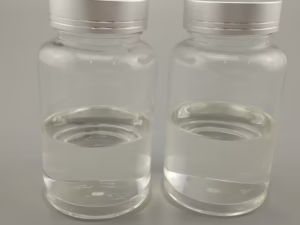Description
Acetic Acid: A Versatile Compound From Kitchen to Industry
Acetic acid, a common household name, is far more than just the pungent ingredient that gives vinegar its distinctive tang. While widely recognized in the culinary world, this simple organic acid boasts a diverse range of applications, playing a crucial role in industries from textiles to pharmaceuticals.
What is Acetic Acid?
Acetic acid (CH₃COOH) is a colorless liquid with a characteristic sour odor. It’s a weak organic acid, meaning it doesn’t fully dissociate into ions in water. Its key characteristics include:
- Solubility: Highly soluble in water and other polar solvents.
- Acidity: While a weak acid, it can still corrode metals and irritate skin.
- Volatility: Releases vapors that can be irritating to the eyes and respiratory tract.
A Culinary Staple: Vinegar
The most familiar form of acetic acid is vinegar, which is typically a solution of 4-8% acetic acid in water. Vinegar is produced through the fermentation of ethanol (alcohol) by acetic acid bacteria. This process is widely used to create various types of vinegar, each with a unique flavor profile depending on the source material (e.g., grapes for wine vinegar, apples for cider vinegar). As a culinary ingredient, vinegar is used for:
- Flavoring: Adding a sour and tangy taste to salads, sauces, and marinades.
- Pickling: Preserving food by inhibiting the growth of bacteria and molds.
- Cleaning: Its mild acidity can help dissolve mineral deposits and cut through grease.
Beyond the Kitchen: Industrial Applications
Beyond its culinary role, acetic acid is a crucial chemical feedstock in a wide range of industries. Its versatility stems from its reactivity and its ability to form various derivatives:
- Production of Vinyl Acetate Monomer (VAM): VAM is used to manufacture polymers like polyvinyl acetate (PVA), a key ingredient in adhesives, paints, and coatings. This is the largest single use of acetic acid globally.
- Production of Acetic Anhydride: Used in the production of cellulose acetate, which is employed in the creation of photographic film, textile fibers, and cigarette filters.
- Solvent: Acetic acid is used as a solvent in various chemical processes, particularly in the production of pharmaceuticals and plastics.
- Textile Industry: Used as a mordant in dyeing textiles and in finishing processes.
- Pharmaceuticals: Used in the synthesis of various drugs, including aspirin.
- Rubber Production: Used as a coagulant in the production of natural rubber.
Production of Acetic Acid
Acetic acid is produced through several methods, including:
- Methanol Carbonylation: The most common industrial method, involving the reaction of methanol with carbon monoxide.
- Fermentation: As described for vinegar production, bacteria are used to ferment ethanol into acetic acid.
- Ethylene Oxidation: Ethylene is oxidized in the presence of a catalyst to produce acetaldehyde, which is then further oxidized to acetic acid.
Safety Considerations
While acetic acid has numerous applications, it’s important to handle it with care. Concentrated acetic acid is corrosive and can cause burns upon contact with skin. Inhalation of acetic acid vapors can irritate the respiratory system. When working with acetic acid, it’s essential to wear appropriate personal protective equipment (PPE) such as gloves, eye protection, and a respirator, depending on the concentration and duration of exposure.
The Future of Acetic Acid
As industries increasingly seek sustainable and environmentally friendly alternatives, research is focused on developing greener methods for producing acetic acid. Biorefineries are exploring the use of biomass as a feedstock for fermentation, offering a more sustainable route to this versatile chemical.
In conclusion, acetic acid is a remarkably versatile compound with applications that extend far beyond the kitchen. From its role in flavoring food to its crucial function in industrial processes, acetic acid continues to be a vital chemical with a significant impact on our daily lives. As research continues to develop more sustainable production methods, its importance is likely to grow even further in the years to come.












Reviews
There are no reviews yet.